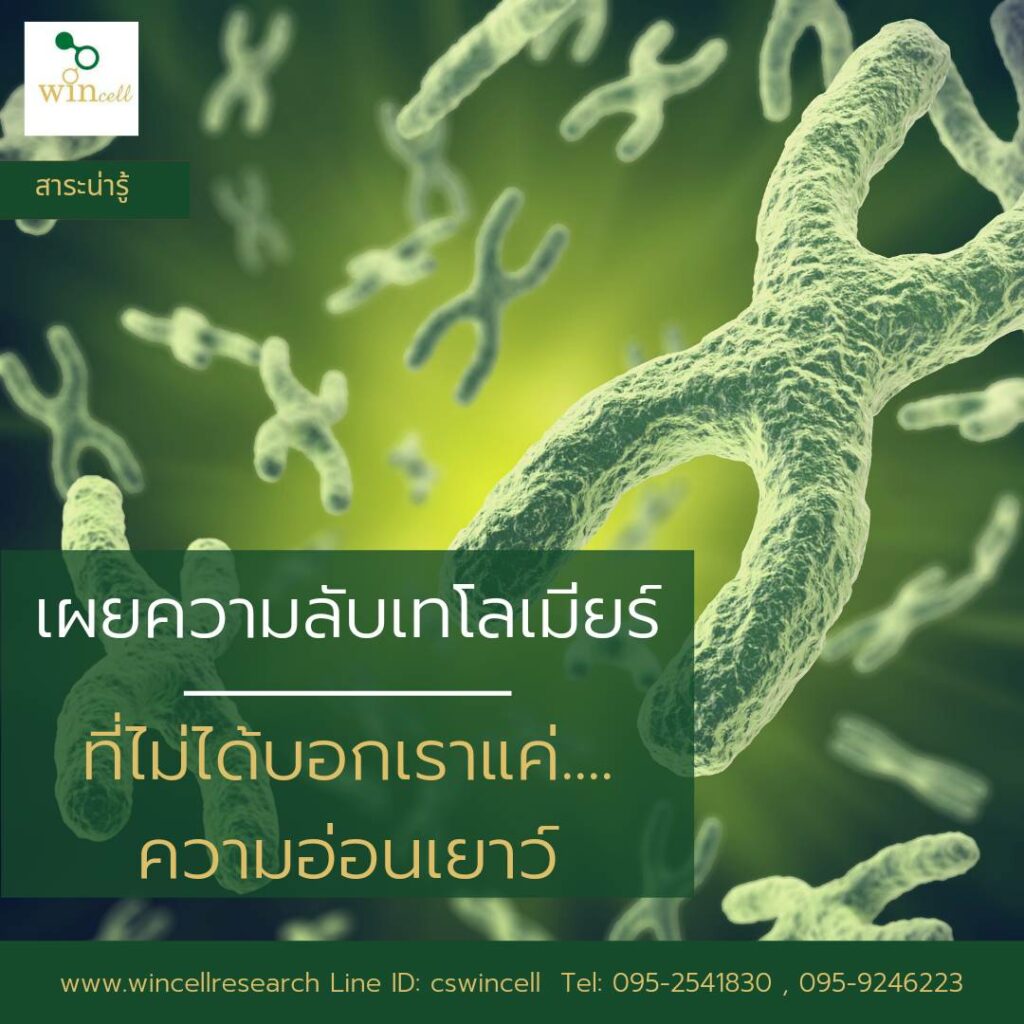
The aging process is a complex and continuous one, resulting in our bodies transitioning from high efficiency to gradually reduced performance. Consequently, we cannot escape aging, leading to visible signs of bodily aging and diminished abilities, including the degeneration of organs and a decrease in physical strength, restricting our capacity to perform various tasks as before.
All that has been said is about aging in general, based on the count of years passed. But in reality, the cells in our bodies also age just like us. The difference is that we can’t see the aging of cells in our bodies. So, at this moment, are the cells in our bodies older or younger than our external appearance? Why do we need to know the cellular age? Let’s decode this secret together.

At the cellular level, there is a component called telomere located at the end of chromosomes, which is used to measure the youthfulness of cells. Telomeres shorten progressively with each cell division and are damaged after each division. Therefore, youthful cells have longer telomeres, while aged cells have shorter telomeres. This cellular phenomenon impacts bodily aging, leading to various pathologies such as the degeneration of the immune system, making it easier to contract infections or even causing autoimmune disorders, increased risk of cardiometabolic disorders, osteoporosis, sarcopenia (loss of muscle mass), arthritis, cataracts, neurological disorders, and cancer, which are common diseases in the elderly population.
But the intelligence that nature has endowed humans with is that our bodies still retain stem cells, which contain the enzyme Telomerase that can extend the Telomere length to the same or shorter length. This enzyme is found in Adult stem cells, lymphocytes, endothelial cells, and germline cells. However, these cell groups are very few compared to all the cells in the body, so they are not enough to compensate for the cells with shortened telomeres in the body.
The first secret to be revealed is the specificity of the telomere structure, which is a nucleoprotein complex located at the ends of all chromosomes, acting like a cap to protect the DNA during repair or replication processes. The nucleoprotein complex is formed by the combination of six types of proteins, creating a structure called Shelterin, which binds to the end of the Telomeric DNA composed of repeating sequences of bases called Hexanucleotides (TTAGGG). This base sequence can be found in both animals and humans, with the difference being in the length of the sequence.

In humans, the length of telomeres is between 5-15 kilobase pairs (kbp), and with every cell division, 50-200 base pairs of this sequence are lost. When the body is exposed to high levels of free radicals, this can be a factor that accelerates the shortening of telomeres. If the ends are not lengthened back to their original length, cells will start to age, leading to various effects on the body as previously mentioned. Additionally, scientists have discovered that these aging cells release many substances that can spread to neighboring cells, causing them to age simultaneously.
If we remember, in our body, we still have stem cells that possess the enzyme telomerase, which functions to extend telomeres back to their original length. This is why stem cells remain youthful. However, in other cells that are not stem cells, the enzyme telomerase is regulated to be inactive, to control unreasonable cell division. Therefore, if we want to maintain the original length of telomeres, we need to prevent them from being destroyed and consider whether we can increase the enzyme telomerase in cells. The answer is that we can increase it, but it must be in an appropriate amount to allow the cells to maintain a normal state. This is because further studies have shown that in cancer cells, the enzyme telomerase is more active than in normal cells, resulting in cancer cells that are difficult to kill.

Therefore, in examining the length of telomeres and the enzyme telomerase, we can look back at our behaviors to see which lifestyle choices may lead to telomere shortening. We can also determine if the amount of telomerase enzyme we have is sufficient to repair and maintain telomere length, keeping our cells young. If we understand this information about our bodies, we can use it to decode the secrets and adjust our behaviors to keep our cells youthful, reducing the risk of age-related diseases.
Reference documents
- Nussey, D.H., Baird, D., Barrett, E., Boner, W., Fairlie, J., Gemmell, N., Hartmann, N., Horn, T., Haussmann, M., Olsson, M. and Turbill, C., 2014. Measuring telomere length and telomere dynamics in evolutionary biology and ecology. Methods in Ecology and Evolution, 5(4), pp.299-310.
- Murnane, J.P., Sabatier, L., Marder, B.A. and Morgan, W.F., 1994. Telomere dynamics in an immortal human cell line. The EMBO journal, 13(20), pp.4953-4962.
- Wright, W.E. and Shay, J.W., 2000. Telomere dynamics in cancer progression and prevention: fundamental differences in human and mouse telomere biology. Nature medicine, 6(8), pp.849-851.
- Bize, P., Criscuolo, F., Metcalfe, N.B., Nasir, L. and Monaghan, P., 2009. Telomere dynamics rather than age predict life expectancy in the wild. Proceedings of the Royal Society B: Biological Sciences, 276(1662), pp.1679-1683.
- Aubert, G., 2014. Telomere dynamics and aging. Progress in molecular biology and translational science, 125, pp.89-111.
